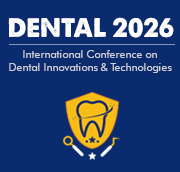Title : Effects of mouthwashes on leaching of cytotoxic monomers (TEGDMA, UDMA) And BPA from Dental resin composite fillings
Abstract:
In the past several decade resin composite fillings have become the most popular filling material used by dentists for restorations. This is mainly for aesthetic reasons because the composites match the color of the tooth. The resin composites consist of organic monomers, inorganic filler particles, and other components. The backbone of the organic monomers that we are studying is bisphenol A-glycidyl methacrylate (Bis-GMA) and urethane dimethacrylate (UDMA), which gives the filling a rigid structure. Other components such as triethylene glycol dimethacrylate (TEGDMA) and 2-hydroxyethyl methacrylate (HEMA) are used as diluents to reduce the viscosity of Bis-GMA and UDMA. However, numerous studies have found that these components can leach off the composites due to stress from chewing or exposure to solutions like ethanol. Furthermore, it has been found that TEGDMA and BPA can have cytotoxic effects on cells. While BPA is not directly used as an ingredient in resin composite fillings, BPA is a precursor in the synthesis of Bis-GMA. In this study, eight different experiments were performed where two types of resin composites were rinsed with two different types of mouthwash containing varying concentrations of alcohol, a 75% ethanol solution, and an alcohol-free mouthwash for the control. The mouthwash rinses were run through a gas chromatography-mass spectrometry (GC-MS) instrument to find any traces of monomers, diluent, and BPA that had leached out from the cured composites. Based on previous studies, when a 75% ethanol solution was used as an extraction media, it caused the largest amount of monomer to leach off. The goals of this research were to determine which of two types of resin composites with different components will leach monomers and determine which mouthwash rinse will cause composites to leach monomers.
Szczesio-Wlodarczyk, A., Polikowski, A., Krasowski, M., Fronczek, M., Sokolowski, J., Bociong, K. (2022). The influence of low-molecular-weight monomers (TEGDMA, HDDMA, HEMA) on the properties of selected matrices and composites based on Bis-GMA and UDMA. Materials, 15(2649), 1-10. https://doi.org/10.3390/ma15072649, Al-Hiyasat, A. S., Darmani H., Milhem M. M. (2005). Cytotoxicity evaluation of dental resin composites and their flowable derivatives. Clinical Oral Investigations, 9, 21-25. Goldberg, M. (2007) In vitro and in vivo studies on the toxicity of dental resin components: a review. Clinical Oral Investigations, 12,1-8.
Audience takes away:
- The audience will learn about the chemistry of two types of resin composite filling materials
- The audience will learn about the effects of different ingredients in mouthwashes on the leaching of harmful components from resin composites
- The information presented may help dentists in selecting mouthwashes to use in their offices
- There are several areas of these experiments that can be explored further by researchers in chemistry and/or dental fields



